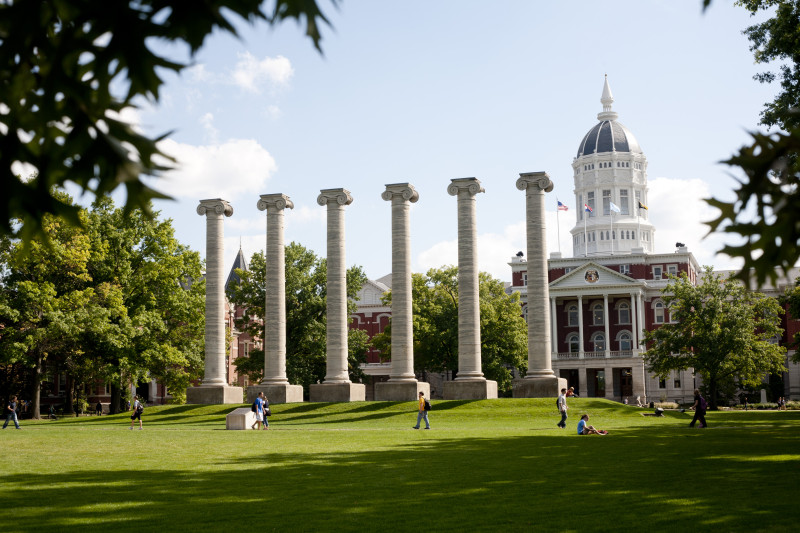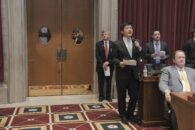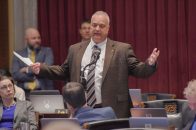By Brian Treece, Mayor of Columbia
The University of Missouri, with 30,000 students and 15,000 faculty and staff members, is a leader in scientific and technological innovation that Missouri and our nation will depend upon for economic growth and prosperity in the decades ahead.
Indeed, MU is a world-class research institution—housing facilities that foster discovery and interdisciplinary collaboration across a wide range of scientific fields. The university has 17 research farms, research centers, and forests, covering more than 14,500 acres, and has several multi-disciplinary grants that focus on crop production and animal health.
The school’s extraordinary level of interdisciplinary research is exemplified by first-rate collaborative environments that include the Christopher S. Bond Life Sciences Center, the Dalton Cardiovascular Research Center, the Health Activity Center, the Interdisciplinary Plant Group, Center for Geospatial Intelligence, and the National Center for Animal Reproduction and Genomics.
All of this constitutes a scientific powerhouse that helps draw to our state industries grounded in science and technology.
Recently, I had the pleasure of touring the university’s research facilities with senior executives from Bayer, the global pharmaceutical and life sciences giant that we soon expect to become a cornerstone of Missouri’s business community through its merger with St. Louis-based Monsanto. The Bayer team was highly impressed with what they saw at MU, and all of us were enthusiastic about the Bayer-Monsanto merger bringing a new level of innovation to Missouri and the City of Columbia.
Monsanto, of course, has been a key player in Missouri’s scientific and business worlds since 1901. Over the decades, MU’s researchers in fields such as agriculture, veterinary medicine, and pharmaceuticals have collaborated with Monsanto’s R&D scientists and engineers to give the world new and better ways to feed itself and stay healthy
The challenges of feeding a hungry world mean much more of that work lies ahead. Experts says farmers around the planet must boost productivity on their land by 60 percent to feed a total world population of 10 billion just over 30 years from now. In fact, they will have to meet that demand with less farmland, as the amount of farmland per capita falls by 17 percent over that period. The projected impact of climate change will make providing food and fiber even more daunting, as farm yields are expected to decline 17 percent by 2050 due to warmer average temperatures and other factors.
Bayer’s worldwide corporate experience and resources, newly established in Missouri, will contribute to these vital efforts. Together, Bayer and Monsanto over the years have been at the heart of revolutionary agricultural innovations. Their combined annual research and development work is valued at EUR 2.5 billion. More than 10,000 professionals within the two companies work in facilities in the U.S., Germany, and elsewhere. Bayer U.S. employment stands at 12,000 people, while Monsanto has about 20,000 workers.
The Bayer-Monsanto partnership will create an ever-greater demand for graduates in myriad fields of science and technology, and will offer new opportunities for those who pursue innovation. And the City of Columbia is committed to the process we established some years ago for providing an ecosystem that supports Bayer and others in their scientific work.
Columbia’s Missouri Innovation Center, already a key resource in helping entrepreneurs carry their ideas through the research and development phases and on to commercialization, is poised to become even more important to the Mid-Missouri economy with Bayer’s presence ramping up interest and activity in agribusiness and related fields.
Collaboration between Bayer and MU has already been fruitful. Recently, Bayer licensed an MU-developed technology via a startup company incubated at the MU Life Science Business Incubator at Monsanto Place. The technology was originally developed on the MU campus at the Bond Life Science Center, also partially funded by Monsanto. This successful case history demonstrates how Bayer and MU can collaborate on new products in agriculture, animal health, and healthcare. It also shows how Monsanto’s investments in MU and the Life Science Incubator have created local jobs.
The City of Columbia will welcome Bayer and support, in every way, its growing collaboration with MU and other resources based here. Because as the University of Missouri and its private sector partners grow and enhance their stature, our city also rises on the national and international stages.








